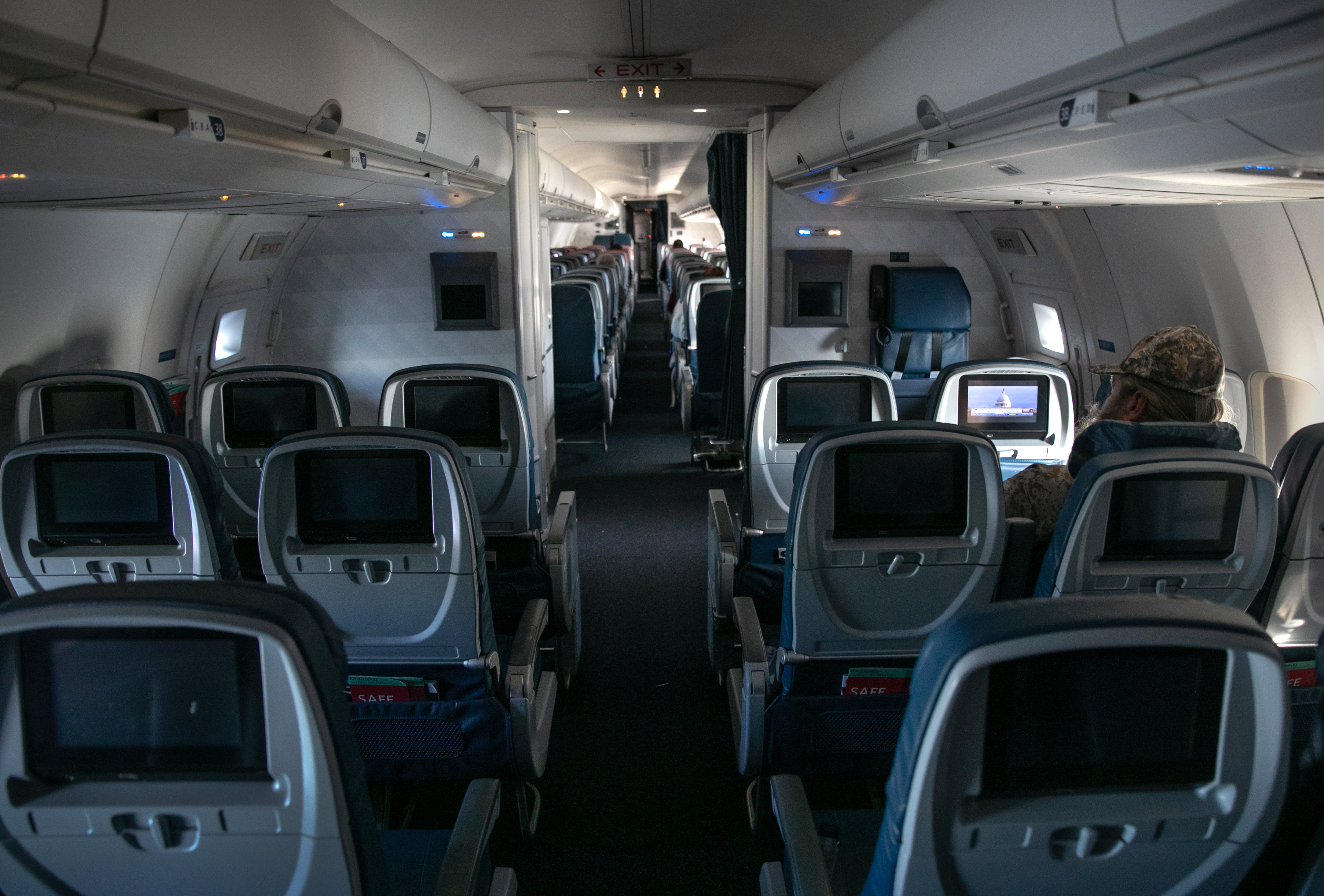
The more than $50 billion in government aid U.S. airlines are seeking as the coronavirus ravages their businesses must include worker and consumer protections, some lawmakers and labor unions said.
Airlines are reeling from what executives have called an unprecedented collapse in travel demand as COVID-19 spreads, prompting millions of Americans to stay at home. More than 5,000 cases of coronavirus have been detected so far in the United States, according to Johns Hopkins University.
As a result airlines are culling thousands of flights, parking airplanes, deferring orders and asking workers to take unpaid leave in a bid to preserve cash. U.S. airlines employ close to 750,000 people.
Their requested aid includes $25 billion in direct grants — five times more than what airlines received following the Sept. 11, 2001, attacks — and is crucial for the carriers, their lobbying group, Airlines for America, said.
Congress has just begun negotiations around a third emergency funding bill to address the pandemic. The bill is expected to include some form of industry aid, as well as protections for individuals and companies battling the virus.
Labor unions and lawmakers say that while the carriers didn't cause the dire situation they're now in, they shouldn't get a blank check.
"We have told Congress that any funds for the aviation industry must come with strict rules," said Sara Nelson, president of the Association of Flight Attendants, which represents some 50,000 cabin crews at United, Alaska, Spirit and others. "That includes requiring employers across aviation to maintain pay and benefits for every worker. No taxpayer money for CEO bonuses, stock buybacks or dividends. No breaking contracts through bankruptcy."
Rep. Jan Schakowsky, D-Ill., on Monday tweeted her support of the framework laid out by Nelson.
The four biggest U.S. carriers — Delta, American, Southwest and United — have collectively spent about $39 billion over the last five years buying back shares, according to a tally from S&P Dow Jones Indices. Those carriers' shares are now trading at multiyear lows. Boeing, which is also seeking government aid, spent more than $35 billion in that period.
"We fully recognize that the company had the opportunity to build up its cash reserves and repeatedly advocated for them to do so," wrote Todd Insler, chairman of the union that represents United's pilots, the Air Line Pilots Association. "In spite of ALPA's warnings, they instead chose to spend company resources differently.
"In the future, there will be a time for a reckoning, blame, and restitution — I assure you of that. For now, we need management to focus on the enterprise, and we need to work together to survive," he said.
Larry Willis, president of the Transportation Trades Department, an umbrella group of 33 unions in the sector notes that workers were hit with layoffs after the 9/11 bailouts and that it took years for the sector to recover.
"Lawmakers must ensure bailout and stimulus funds flow to working families, and collective bargaining rights need to be preserved and respected," he said. "Front-line workers, including those in the aviation sector, need to know they are supported by policies that will put their families first and position our country to flourish once this crisis passes."
Lawmakers are also seeking that airlines protect workers and consumers. Airlines have increased fees to change tickets and check bags, and also added new ones such as seat selection for standard legroom, drawing ire from some lawmakers.
Sen. Edward Senator Markey, a Massachusetts Democrat said that "any infusion of money to the airlines must have some major strings attached," which include protections for front-line airline employees like flight attendants, pilots and airport workers. It must also come with new rules to "prohibit consumer abuses like unfair change and cancellation fees," which can run $200 or more.
Congress should ensure workers and businesses receive relief on a "broad and equitable basis," said Sen. Tom Udall, a New Mexico Democrat. "While the travel and tourism industries are important to New Mexico, economic relief should be focused on keeping workers and their families in their homes with enough support for their daily needs. Any economic relief should be contingent on the benefits flowing to workers and their families, not CEOs and shareholders."
Other travel companies are also talking with White House officials, including Vice President Mike Pence, about the drop in bookings. The U.S. Travel Association, whose members include giants like Hilton, Hyatt, Marriott and retailers like Macy's, are meeting with White House officials about the financial damage from the coraonvirus crisis. They estimate a loss $1.4 billion in revenue every week and that 1 million hotel jobs have been eliminated or will be because of the drop in bookings.
Correction: Sen. Tom Udall is a New Mexico Democrat. An earlier version misidentified his state.
https://news.google.com/__i/rss/rd/articles/CBMiZ2h0dHBzOi8vd3d3LmNuYmMuY29tLzIwMjAvMDMvMTcvY29yb25hdmlydXMtYWlybGluZS1haWQtbXVzdC1pbmNsdWRlLXdvcmtlci1wcm90ZWN0aW9ucy11bmlvbnMtc2F5Lmh0bWzSAWtodHRwczovL3d3dy5jbmJjLmNvbS9hbXAvMjAyMC8wMy8xNy9jb3JvbmF2aXJ1cy1haXJsaW5lLWFpZC1tdXN0LWluY2x1ZGUtd29ya2VyLXByb3RlY3Rpb25zLXVuaW9ucy1zYXkuaHRtbA?oc=5
2020-03-17 16:45:05Z
52780669601992





